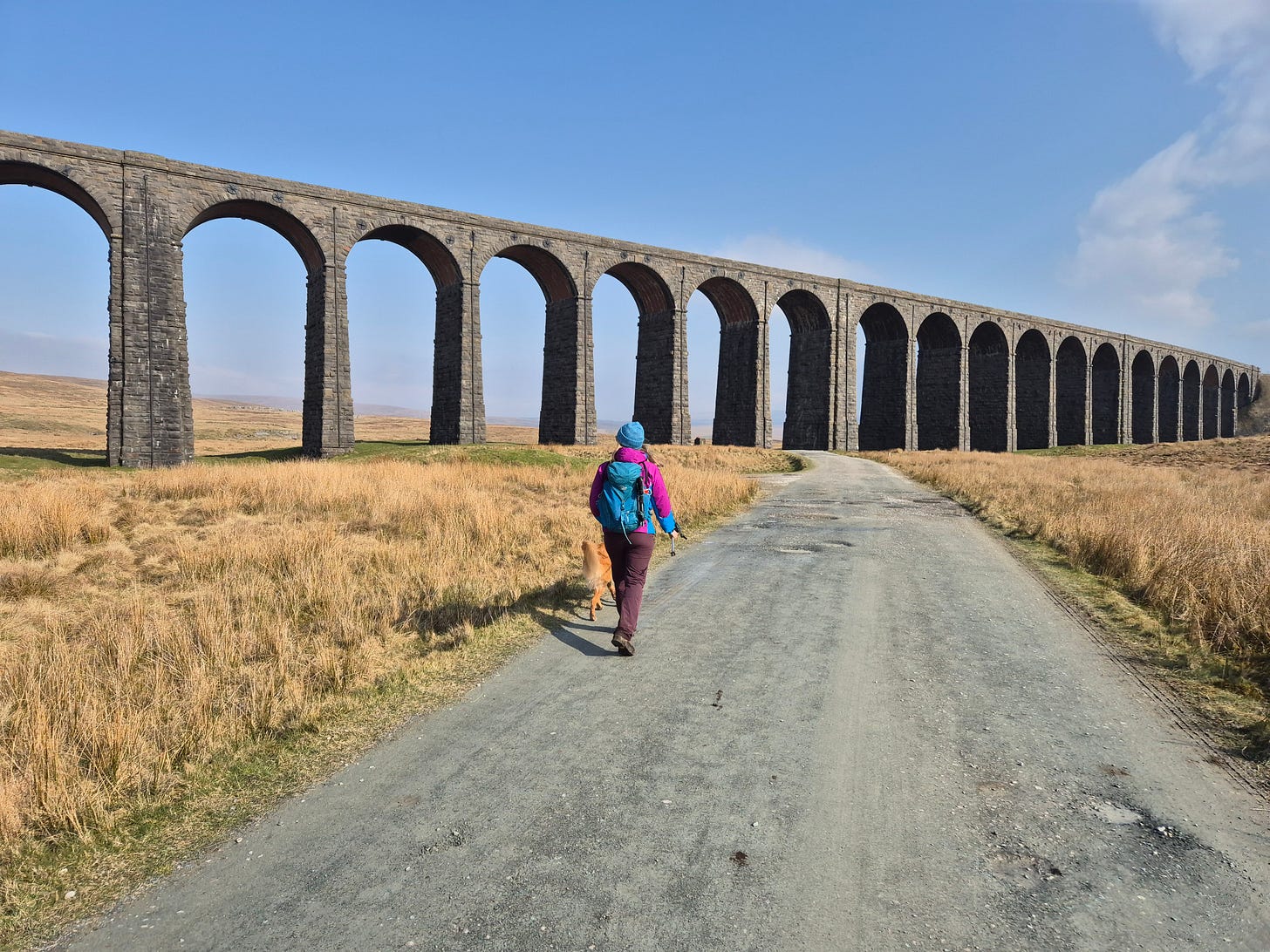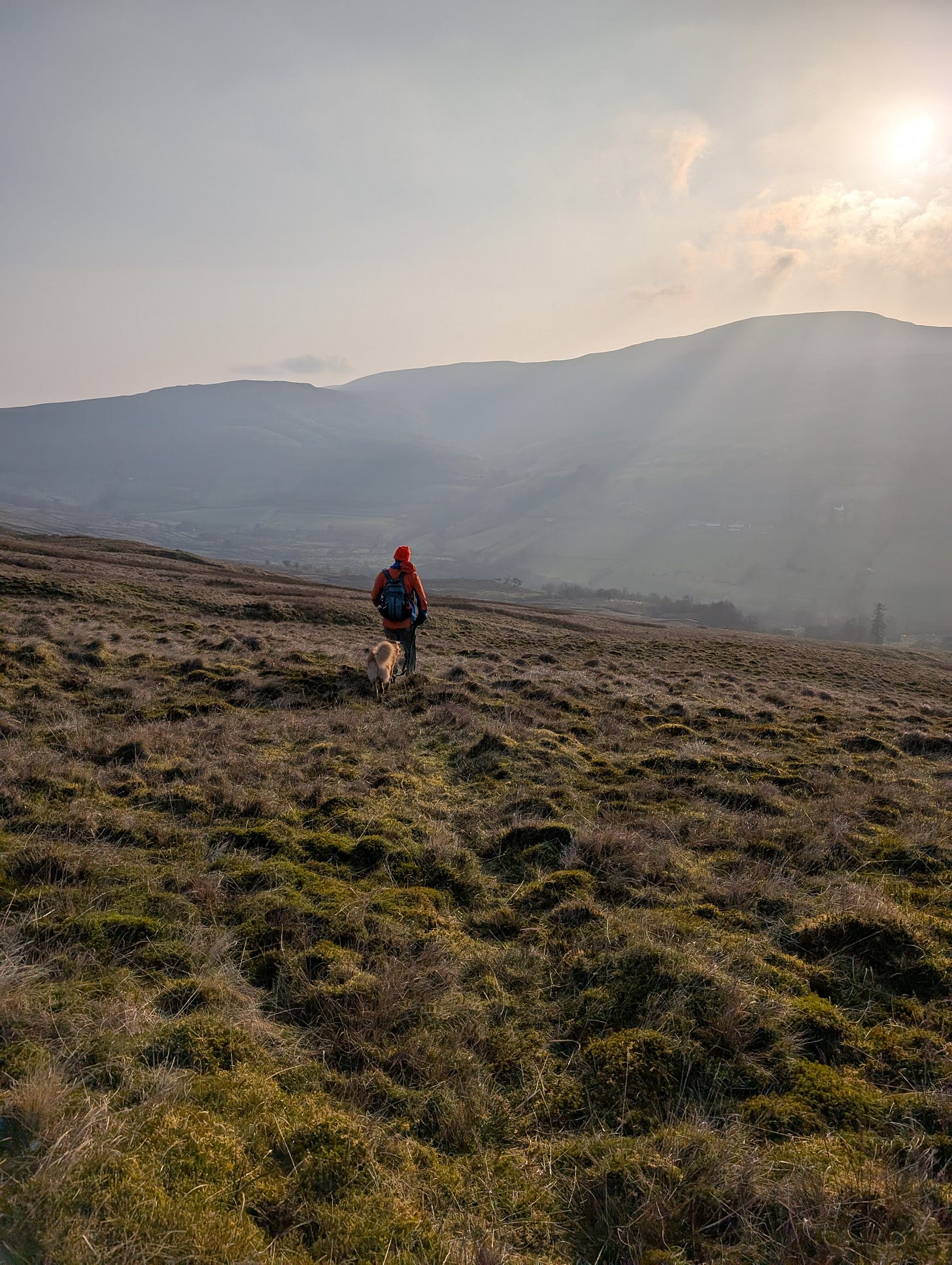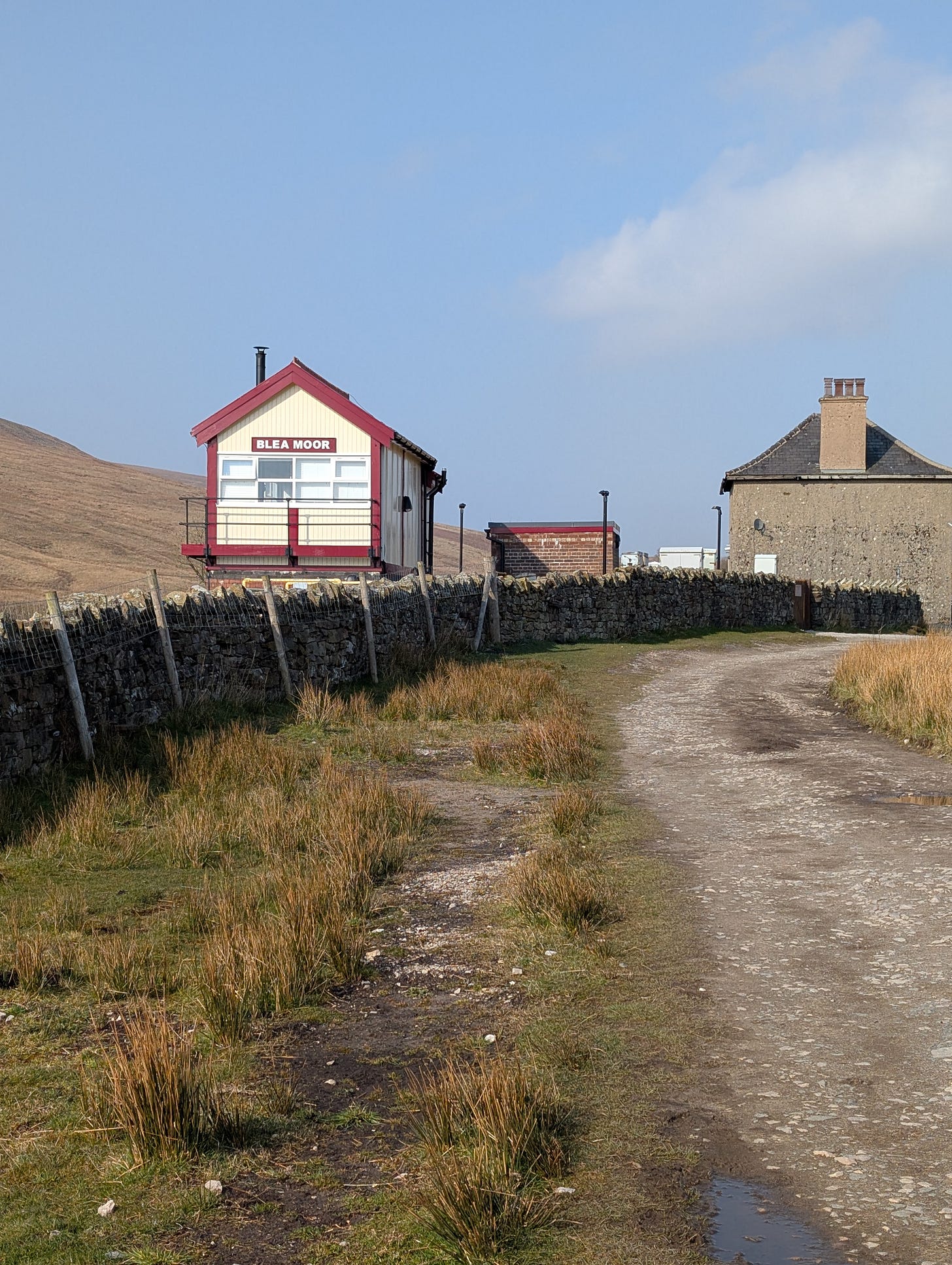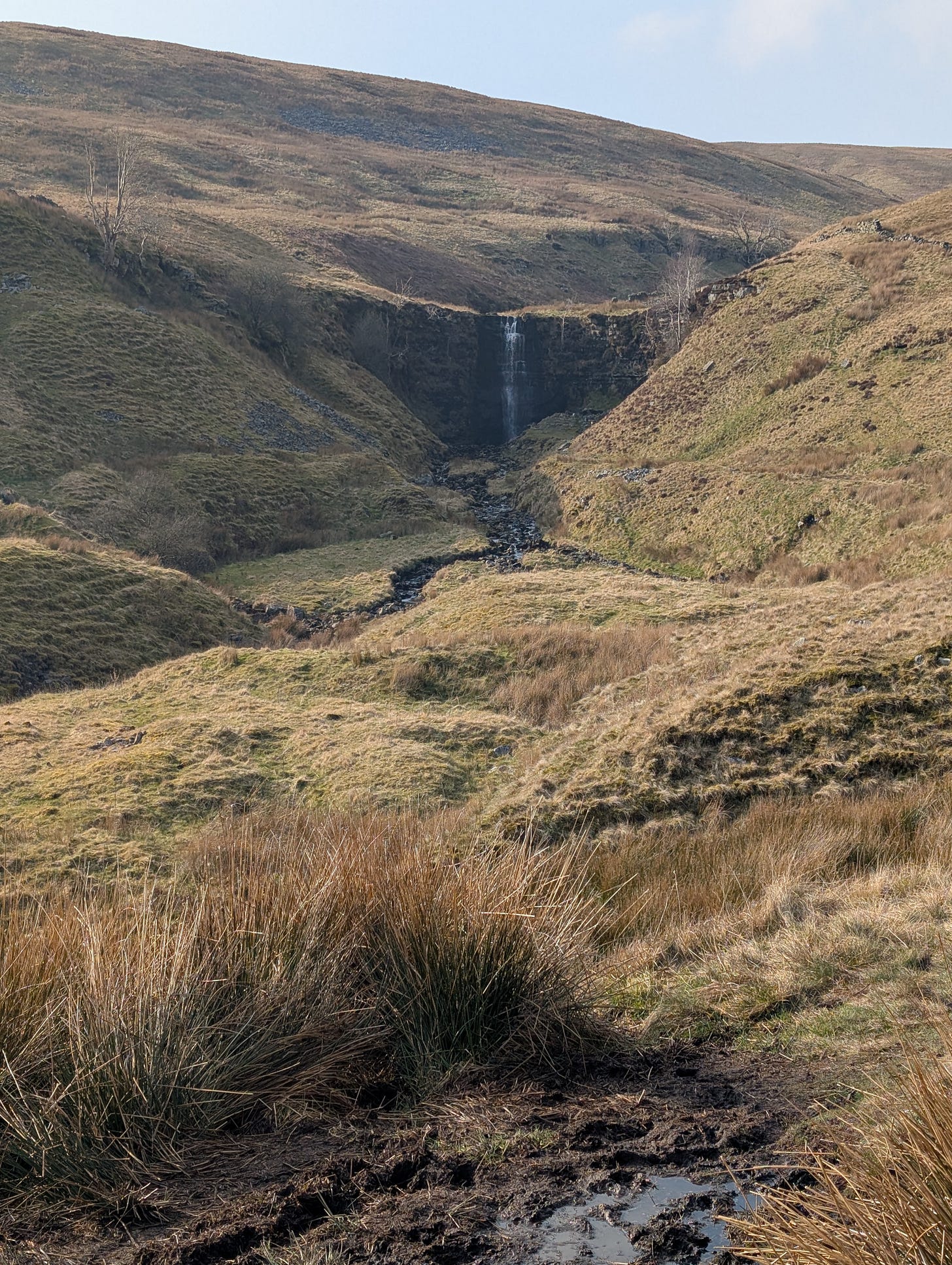Whernside Loop: Beautiful Circular Walk in the Yorkshire Dales
Skip the crowds and step into a moody moorland loop, where Norse echoes meet Victorian ambition.
This month’s walk embraces a more Scandinavian vibe as we hike through the heart of the Yorkshire Dales. Place names rumble in the throat like a guttural car engine: hinga (“steep”), beck (“brook”), scar (“rocky outcrop”), and gill (“narrow valley”).
The Yorkshire Dales’ verdant hills carry a quietude that belies the weight of history in this landscape. Prehistoric humans scoured its hillsides for stone material for tools. Romans established camps and Vikings brought farmsteads and settlements.
With few crowds on this walk, you can wander and see the tumbling waterfalls and cratered hillsides as the previous inhabitants did centuries ago. While others chase the Yorkshire Three Peaks challenge, this hike will take you on a journey through time with relative solitude.
🥾 Walk summary
Route: Ribblehead Circular via Blea Moor, Force Gill Aqueduct, and Whernside shoulder
Start/End Point: Ribblehead Viaduct (shot walk from Ribblehead Station)
Distance: 10.4 miles / 16.74 km
Time: 6-8 hours (allow time for gawping at viaducts and waterfalls)
Grade: Moderate – clear paths, some rocky sections and elevation gain
Best for: History hunters, solitude seekers, fans of big skies and ghost detectives
Highlights: Ribblehead Viaduct, Blea Moor Signal Box, Force Gill Aqueduct, views of Whernside and Ingleborough, possible curlews, and maybe a spectral sighting (if you’re unlucky)
Hiking GPS file 🗺
Download the route via OS maps and follow the app’s instructions for easy navigation. Let me know how you found it via the comments section at the bottom of this post - the feedback helps me improve routes for the future!
Tombstones to Victorian industry

Ribblehead Viaduct rises like a plucky upstart between the ancient grit peaks of Whernside and Ingleborough. The lofty brick arches soar over the valley, a testament to Victorian engineering. They’re also airy tombstones to the numerous people that perished in its design.
In the 1870s some 2,300 people lived here in makeshift tent towns. Building a viaduct was dangerous business. If construction-related accidents didn’t get you, then smallpox or deadly brawls would just as easily spirit you away. Hundreds of workers died in the making of the Ribblehead Viaduct. The train company had to use additional funds to extend the local church’s cemetery to accommodate the number of burials.
It’s not surprising that the gruesome deaths against the backdrop of desolate Blea Moor have conjured ghost hauntings over the years. Signalmen at Blea Moor signal station have reported ghostly phone calls, and passengers have complained of carriages overcome by sickly sweet aromas when crossing the viaduct.
The viaduct isn’t the only remnant of Victorian ambition still in operation near Whernside.
The loneliest signal box in the country
As you approach Blue Clay Ridge, spare a thought for the folk that work at Blea Moor Signal Box. It’s the most remote signal box in the country.
Located far from any villages or settlements, Blea Moor is only accessible by foot. The signallers undertake important work here though; dozens of trains per day zoom past this incongruous wooden building. It’s only a matter of time before Wes Anderson makes it a key backdrop in his films.
Don’t go chasing waterfalls
TLC may have advised against exploring waterfalls, but they said nothing about aqueducts. The Force Gill aqueduct - named after the Norse-rooted words for ‘waterfall’ and ‘ravine’ - was built by Midland Railway to carry Force Gill into Dale Beck. It’s a scenic place to stop and admire Whernside. If you look closely, there’s also a waterfall nearby, but we won’t tell TLC if you don’t.







